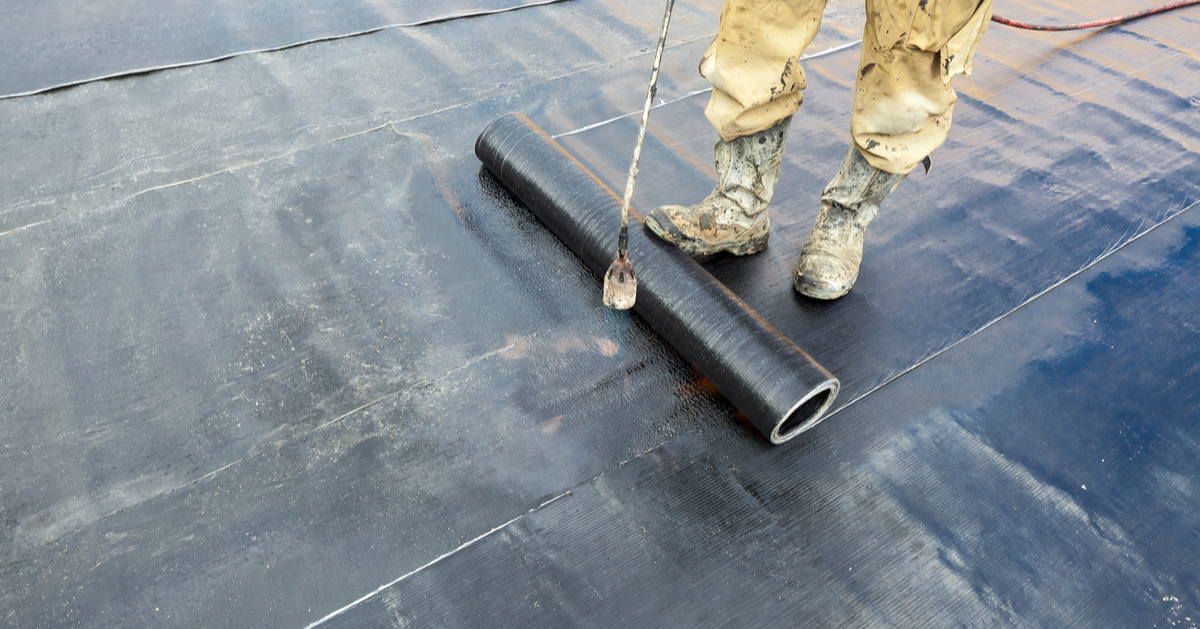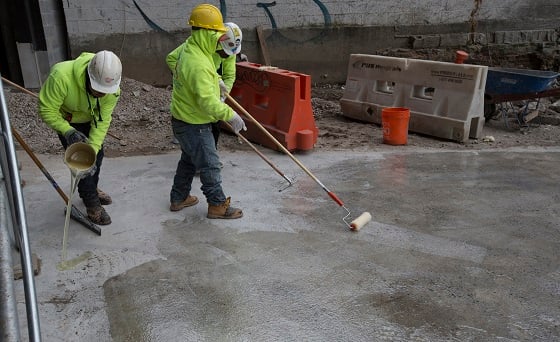The Role of Sump pump discharge drainage Omaha in Improving Water Flow
Sorts of Waterproofing: Checking Out the Different Techniques and Their Applications
Waterproofing is an essential element of building and construction and upkeep. It secures frameworks from the destructive results of water damage. There are several methods readily available, each with its one-of-a-kind applications and benefits. From membrane layer systems to cementitious remedies, comprehending these options is essential for efficient application. The option of waterproofing technique can greatly affect resilience and long life. Exploring these various techniques reveals their unique advantages and potential challenges, motivating additional factor to consider of perfect services.
Membrane Waterproofing Solutions
Membrane waterproofing systems work as an essential barrier against water invasion in numerous frameworks. These systems generally include thin sheets made from materials like rubber, polycarbonate, or bitumen, which are put on surface areas to stop dampness infiltration. They can be installed over or listed below quality and are especially efficient in locations vulnerable to high water direct exposure, such as cellars, roofs, and foundations.The installment process entails cleansing the substrate, using adhesives or primers, and precisely fitting the membrane layer to guarantee total protection. Membrane systems can be either completely stuck, mechanically affixed, or laid loose, depending upon the particular needs of the task. They provide toughness and flexibility, accommodating structural activities without jeopardizing their waterproofing abilities. Moreover, these systems can be enhanced with extra layers for improved security. Ultimately, membrane layer waterproofing systems are necessary for securing structures against water damages and preserving lasting stability.
Liquid-Applied Waterproofing Coatings
Liquid-applied waterproofing layers provide a flexible solution for shielding surfaces from water seepage - Water Solutions. These coverings consist of liquid materials that, when applied, create a smooth, adaptable membrane. Their adaptability enables application on various substratums, including concrete, steel, and wood. The coverings can be made use of in diverse atmospheres, from domestic to commercial settings, making them appropriate for roofings, structures, and below-grade structures.One considerable advantage of liquid-applied finishes is their ability to adapt to uneven shapes and penetrate fractures, creating a durable barrier versus dampness. They frequently show exceptional adhesion properties and resistance to UV radiation, ensuring longevity and sturdiness. Furthermore, the application procedure is typically uncomplicated, permitting quick setup and decreased labor expenses. This approach likewise minimizes the danger of water merging, as the continuous layer successfully routes water away from at risk locations. In general, liquid-applied waterproofing coverings are an efficient selection for complete water protection
Cementitious Waterproofing Solutions

Cementitious waterproofing services use a durable alternative for frameworks requiring trusted moisture security. These systems mostly utilize a mix of concrete, sand, and chemical additives to produce a water resistant obstacle. They are frequently put on surfaces such as concrete walls, foundations, and floors, offering a sturdy, durable protection versus water intrusion.One of the vital advantages of cementitious waterproofing is its ease of application; it can be applied making use of a brush, roller, or spray, making it appropriate for various project sizes. In addition, this method works with many surfaces and can typically be made use of together with other waterproofing techniques.Cementitious solutions are particularly efficient in atmospheres where water direct exposure is a worry, such as cellars or below-grade frameworks. Their outstanding adhesion residential properties guarantee that they bond well with substratums, providing a solid and nonporous layer against wetness penetration.
Bentonite Waterproofing
Bentonite waterproofing is an extremely effective method that uses sodium bentonite clay to produce an all-natural obstacle versus water. This method manipulates the one-of-a-kind residential or commercial properties of bentonite, which expands upon call with water, securing any kind of possible leaks and preventing dampness infiltration. It is typically used in numerous applications, including structure wall surfaces, passages, and preserving walls, where water resistance is essential.Bentonite can be used in numerous kinds, such as panels or blankets, supplying flexibility in installment. Its ability to self-seal makes it an attractive choice for areas subject to shifting dirt or rising and falling water levels. In addition, bentonite waterproofing is eco-friendly, as it is a natural material that does not present dangerous chemicals right into the surroundings.
Drainage and External Waterproofing Equipments
Effective waterproofing usually involves a mix of strategies, consisting of water drainage and outside systems. Drain systems, such as French drains and sump pumps, are created to reroute water far from structures, minimizing hydrostatic pressure against structures. These Basement waterproofing Omaha systems are essential in protecting against water build-up that can result in structural damage and mold and mildew growth.External waterproofing, on the various other hand, entails using safety barriers to the structure's outside. Methods such as the installment of water resistant membranes, layers, or sealants can help protect against water seepage. This technique not only protects the structure however likewise enhances the overall resilience of the structure.Together, water drainage and outside waterproofing systems form an extensive remedy to handle water successfully. By executing these techniques, residential property proprietors can secure their investments against the damaging impacts of wetness, making sure long-term stability and security for their structures.
Often Asked Inquiries
Just how Do I Choose the Right Waterproofing Approach for My Task?
Picking the right waterproofing technique depends upon factors such as job kind, environmental conditions, spending plan, and wanted long life. Examining these facets permits notified decisions tailored to certain demands and demands.

Can Waterproofing Be Applied in Winter Issues?
Waterproofing can be applied in chilly weather conditions, yet it requires specific products and strategies. Cold temperature levels might influence treating times and bond, necessitating cautious option of products created for low-temperature application.
What Are the Typical Signs of Waterproofing Failure?
Typical indicators of waterproofing failure include noticeable water discolorations, peeling paint, wet odors, mold growth, and fractures in wall surfaces or foundations. Yard drainage Omaha. These signs suggest that moisture is permeating the barrier, compromising its efficiency
Just How Long Does Waterproofing Last Before Requiring Maintenance?
The durability of waterproofing varies, commonly lasting between 5 to one decade. Aspects such as worldly high quality, ecological conditions, and maintenance techniques affect its durability, demanding routine inspections to guarantee effective defense versus water invasion.
Exist Eco-Friendly Waterproofing Options Available?
The concern of eco-friendly waterproofing alternatives reveals a growing interest in lasting materials (Water Solutions Omaha). Different natural materials, such as plant-based sealants and recycled items, offer reliable options while decreasing ecological effect, attracting environmentally mindful consumers